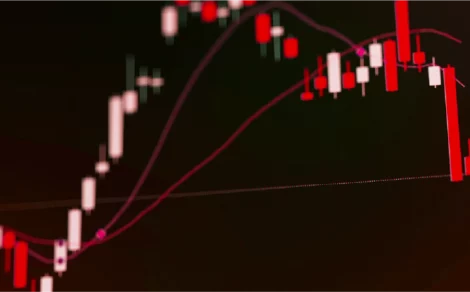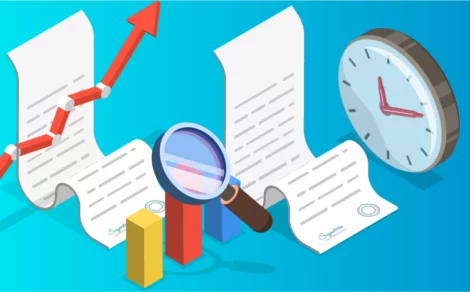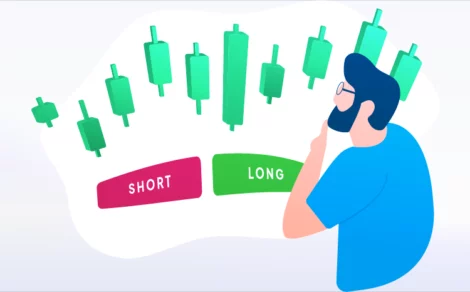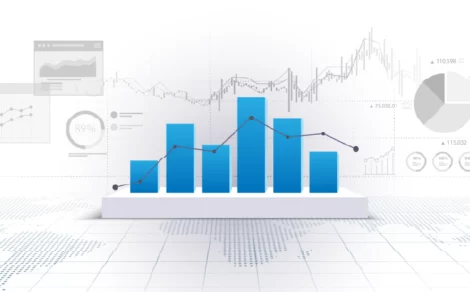Leading indicators try to predict future price movements, helping traders take early positions, while lagging indicators confirm trends after they begin, offering more reliable signals but with a delay.
Toruscope » Online Trading » Difference Between Leading and Lagging Indicators
When it comes to trading, making the right decisions at the right time is very important. To guide their choices, traders rely on metrics like leading and lagging indicators. These indicators help analyse market trends, with leading indicators predicting future movements while lagging indicators confirm trends that have already started. Knowing how to use both types effectively can help you make better trading decisions.
Let’s see what leading and lagging indicators are and the key differences between the two.
Understanding Leading Indicators
Leading indicators in trading help traders predict potential price changes before they happen and aim to give traders a head start by signalling when a trend might begin or reverse. These indicators work by analysing patterns in price movements and market behaviour.
However, leading indicators are not always foolproof. They can sometimes give false signals, meaning the predicted price movement may not happen. To reduce this risk, traders often use them with other tools like support and resistance levels and indicators to confirm trends and make more informed decisions.
Common Leading Indicators
Traders use many tools to spot market trends early. Here are some of the most common leading Indicators:
- Relative Strength Index (RSI) – It shows whether a stock or asset is overbought or oversold.
- Stochastic Oscillator – It is an indicator that predicts turning points in the market by comparing an underlying asset’s closing price to its price range over a certain period.
- Williams %R: It is an indicator that shows how close a security is to its high or low over a specific trading period, typically two weeks.
Benefits of Leading Indicators
Leading indicators are great for short-term trading, especially in volatile markets. They can provide early entry and exit points, which is advantageous for day traders and swing traders. Here are some key benefits of using leading indicators:
- Early entry opportunities: Since they signal trend changes before they occur, they can help you enter trades at a better price.
- Helps predict reversals: These indicators are useful for identifying when a trend might be about to reverse, allowing traders to act quickly.
- Ideal for fast-paced markets: If you’re into day trading or swing trading, leading indicators can help you take advantage of short-term price moves.
Drawbacks of Leading Indicators
Trying to predict the market comes with risks. Here are some drawbacks associated with leading indicators:
- False signals: One of the biggest drawbacks is that they can give you false signals sometimes, making you act too soon.
- Higher risk: Acting on early signals means you might be wrong more often, which can lead to losses if not managed well.
- Can lead to over-trading: Because of the false signals, you might end up entering or exiting trades too frequently.
Understanding Lagging Indicators
Lagging indicators, as the name suggests, follow the market’s price movements and provide signals after a trend has already begun. Unlike leading indicators that try to predict what’s next, lagging indicators are used to confirm the direction and strength of an ongoing trend. This makes them useful for traders and investors who prioritise accuracy over early entry.
Lagging indicators work best in stable or trending markets, where identifying a confirmed uptrend or downtrend can help traders stick to a position with more confidence.
Common Lagging Indicators:
Below are some widely used tools that traders rely on for more reliable signals:
- Moving Averages (MA) – Moving averages smooth out short-term price fluctuations and highlight overall market trends by calculating the average price over a defined time period.
- Bollinger Bands – Based on simple moving averages and standard deviation, they help gauge market volatility.
- Average Directional Index (ADX) – Measures the strength of a trend rather than its direction.
- Moving Average Convergence Divergence (MACD) – It is useful for identifying potential trend reversals or shifts in momentum after they have already started to take place.
Benefits of Lagging Indicator
Lagging indicators are widely used by long-term investors. They help confirm trends, reduce false signals, and provide confidence in holding onto trades for longer periods. Here are some key benefits of tracking lagging indicators:
- Reliable signals: Since they’re based on past price data, they’re less likely to give false alerts.
- Trend confirmation: Great for confirming whether a trend is real.
- Lower risk: They help reduce impulsive decisions and are useful for building confidence in long-term trades.
Drawbacks of Lagging Indicators
Despite their advantages, there are several risks associated with lagging indicators, as outlined below:
- Delayed responses: They often give signals after the move has already started, meaning you might miss the early part of a trend.
- Late entries and exits: This can result in entering trades too late or holding onto a position longer than needed.
- Not great for volatile markets: In fast-moving markets, their slow reaction can cost you opportunities.
Key Differences Between Leading and Lagging Indicators
While both leading and lagging indicators are used to analyse price movements, they serve different purposes and suit different trading styles. Let’s understand how they differ with the help of a table:
| Difference | Leading Indicator | Lagging Indicator |
| Purpose | Leading indicators aim to predict future price movements. | Lagging indicators are designed to confirm trends that have already started. |
| Timing | Leading indicators are faster, offering early entry or exit signals. | Lagging indicators are slower, providing confirmation only after the trend is started. |
| Risk Vs. Reliability | Leading indicators carry higher risk, as they may give false signals. | Lagging indicators are generally more reliable, but may result in missed opportunities. |
| Best Use Case | Leading indicators are ideal for short-term trading. | Lagging indicators are better for long-term investing. |
| Market Conditions | Leading indicators work best in volatile or rapidly changing markets where timing is important. | Lagging indicators are more useful in stable markets where trends are easier to identify and follow. |
Conclusion
Both leading and lagging indicators serve important roles, and the best traders often use a combination of both. Leading indicators can help you stay ahead in the market, while lagging indicators offer peace of mind with confirmation. Understanding the difference between the two can help you create a more balanced and effective trading strategy.
Ready to start your investment journey? Open your 3-in-1 account with Torus Digital today and take the first step towards smart investing.
Frequently Asked Questions
Leading indicators are best suited for short-term or active traders looking to make quick entry or exit decisions, particularly in volatile markets where precise timing is crucial.
Yes, lagging indicators are best for long-term strategies. They help confirm the strength and direction of a trend, making them useful for holding positions with more confidence.
Related Reads
What is Slippage in Trading? Meaning, Causes & Impact Explained
In trading, timing and precision often define success. However, even when a trader believes...
By: torus
- 7 mins
- 01.Jul.2025
- 4(1)
- 97
What is an Option Contract?
Imagine having the flexibility to buy or sell shares at a fixed price, no...
By: torus
- 7 mins
- 01.Jul.2025
- 0(0)
- 43
Types of Financial Instruments You Should Know Before Investing
Before investing funds in any market, it is essential to understand what financial instruments...
By: torus
- 7 mins
- 01.Jul.2025
- 0(0)
- 39
What are Contracts for Difference (CFD)?
Contracts for Difference, commonly known as CFDs, are financial instruments that allow traders to...
By: torus
- 9 mins
- 01.Jul.2025
- 0(0)
- 39
Difference between Short Position & Long Position
Understanding the concepts of short and long positions is essential for anyone interested in...
By: torus
- 8 mins
- 01.Jul.2025
- 0(0)
- 38
Essential Trading Terminologies You Need to Know
Trading in financial markets opens a world full of opportunities. For many first-time investors,...
By: torus
- 8 mins
- 01.Jul.2025
- 0(0)
- 47
Disclaimer: The content provided in this blog is for informational purposes only and does not constitute financial advice or recommendations. The content may be subject to change and revision. Readers are encouraged to conduct their own research and consult with a qualified financial advisor before making any investment decisions. Torus Digital and its affiliates takes no guarantees whatsoever as to its completeness, correctness or accuracy since these details may be acquired from third party and we will not be responsible for any direct or indirect losses or liabilities incurred from actions taken based on the information provided herein. For more details, please visit www.torusdigital.com.
Tenneco Clean Air IPO Listing: Strong Market Debut with 27% Premium
Tenneco Clean Air India Ltd made a confident entrance into the public markets on...
By: torus
- 5 mins
- 19.Nov.2025
-
3.7(6)
-
423
Stock to Buy Today: November 19, 2025
The Indian stock market witnessed a mild decline on November 18, 2025, ending a...
By: torus
- 4 mins
- 19.Nov.2025
-
4.3(3)
-
423
Mirae Asset Infrastructure Fund NFO: A Sector-Focused Bet on India’s Growth
Mirae Asset Mutual Fund has launched a new equity scheme — Mirae Asset Infrastructure...
By: torus
- 4 mins
- 18.Nov.2025
-
4.3(6)
-
423
Emmvee Photovoltaic IPO: Shares Make Muted Market Debut, List Flat At ₹217
Emmvee Photovoltaic Power made a muted debut on 18 November 2025, listing flat at...
By: torus
- 3 mins
- 18.Nov.2025
-
3.7(6)
-
423








